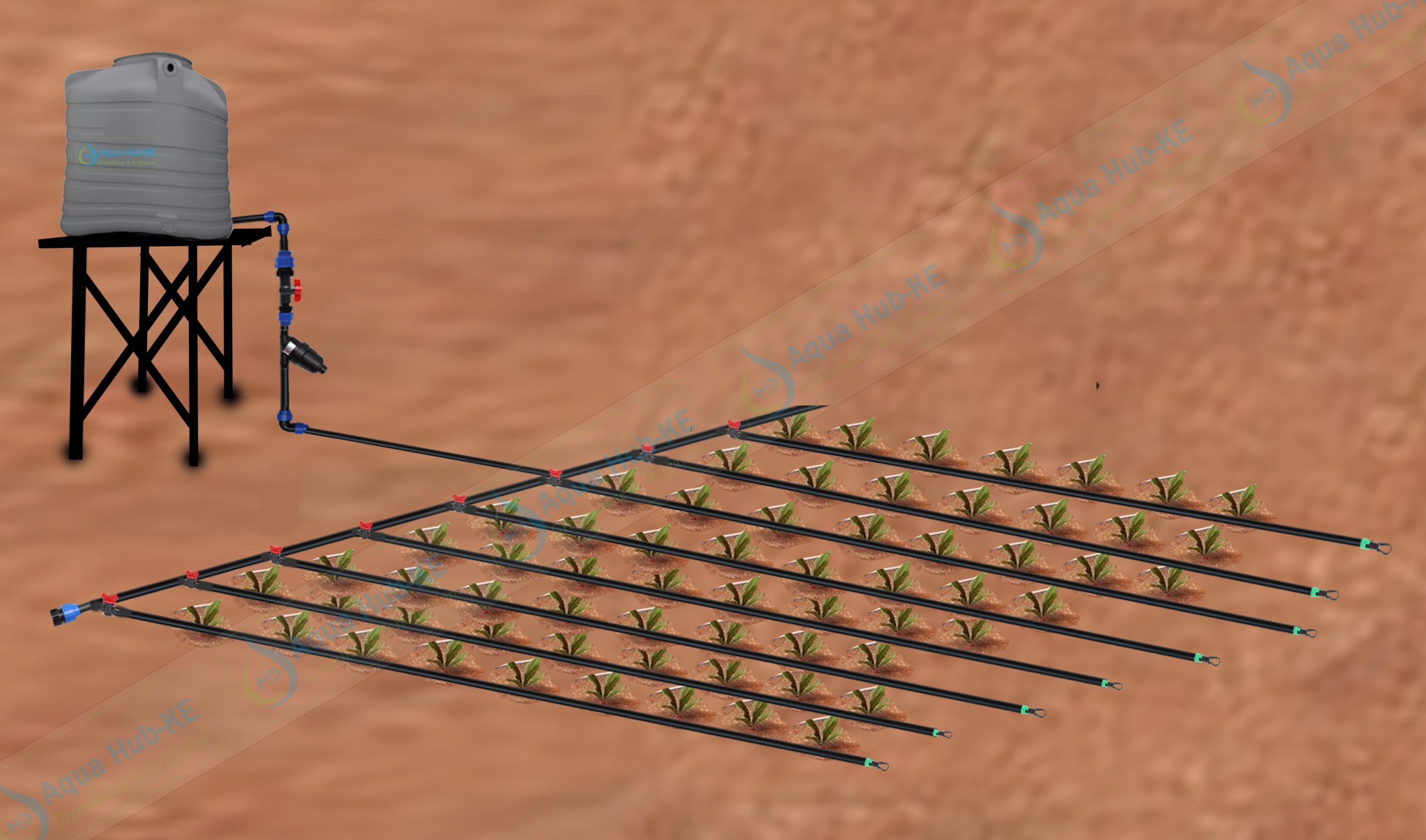Onion farming with drip irrigation has turned into a promiscuous agribusiness activity with a high rate of returns over minimal inputs.
You may be wondering what the secret behind the success of farmers specializing in onion production. Drip irrigation saves you on production Cost and in the long run enhances large yield of onions.
Why You Should Conduct Onion Farming with Drip Irrigation
Bulb Onions are accustomed to changing water needs in response to growth phases. So having a controllable irrigation system would be a win in ensuring the right water needs are achievable continuously. Keeping in mind that bulb onions grow in well-drained and proper water retentive soil, slow watering prevents slow growth.
Setting Up a Drip Irrigation System
Aqua Hub Kenya gives farmers the opportunity to transform less resources into fortunes. Apart from installation, we train farmers on how to conduct onion farming with drip irrigation.
To utilize water balance and high conservation rate, it is ideal to set up a drip irrigation system on your onion farms.
You must have a layout and plan of a drip irrigation system that suits the soil and topography of your farm.

Onion Farming with Drip Irrigation: Planning and Design
A drip irrigation layout is designed to allow Surface or underground irrigation model, but for onions, a surface layout is best.
What affects the plan of a drip irrigation is the size of the farm, bed and desired number of driplines. You can choose to work with 2-3 driplines on a bed or section of land.
The bed spacing for onion farming with drip irrigation should be 1.5-2 M wide and 100 M long.
The plan also includes where to source water, often best to use tank water raised on a high point. Sourcing water from a raised tank will enhance gravitational flow of water on the driplines to all parts of the farm.
The most suitable dripline hole spacing for onions is 15 cm or 20 cm spacing, as they are planted closer.
Pipe layout, connection and installation plan should be available to ensure proper installation of the drip irrigation system.
Installation Of Drip Irrigation System
Starts with an initial step in preparation of the onion farm ready for drip irrigation installation. Once you have planted the onion seedlings, start the process of installation.
Construct a tank tower and set up a water tank. Pump Water to the tank from a nearby source.
Make trenches for laying Mainline pipes, dig 2 ft deep along the spaces between planting beds. After the trenches are dug, lay the mainline and sub-mainline HDPE pipes.
Connect the mainline connection with a backflow preventer, pressure regulator, filter and an adapter. Make the sub mainline to riser connection by drilling the sub mainline pipe, using rubber grommets and inserting PE Off-take connectors.
Insert the start drip connector at the end of lateral pipe. Lay driplines on the planting beds and connect them to the start connection. Seal the dripline ends using end plugs.
Open the water connection to test the system.
Cover the trenches to secure the pipe connection onto the ground.
Maintenance of a drip Irrigation System
Drip irrigation system maintenance determines how effective it will operate and the duration that it can last. There are various tips for maintaining a drip irrigation system including regular checks of the key parts of the system.
The maintenance strategies are:
- Frequent checks for pipe leakages and damage which is noticeable physically or as per the flow rate reduction.
- Observe the flow rates, drops can be an indication of pipe leaks
- Water quality checks is also important to ascertain whether filtration kits are still working effectively.
In case of leakages, damaged pipes, fittings or filters repairs need to be done instantly as delay may cause high water loss.
What are the Benefits of Onion Farming with Drip Irrigation?
- Onion farming with drip irrigation lowers the chances of bulb rot and other diseases.
- Bulbs develop to produce a higher yield because water and nutrients can reach all the onion plants.
- Drip irrigation keeps soil moisture at the optimal level which promotes nutrient feeding on a higher efficiency.
- Makes it possible to conduct onion farming even in arid or drought conditions.
- It is labor intensive. It lowers the cost of labor on large irrigation farms.
- Once installation is complete it can be set to irrigate automatically by integrating with smart controllers.
Cost of Onion Farming with Drip Irrigation (1 acre)
Starting onion farming with drip irrigation will depend on the number of driplines on your beds. On average, you can use approximately KES 150,000 to KES 300,000 for an acre of onion farming with drip irrigation.
system with automatic controllers. It lowers the cost of labor on large irrigation farms.
Cost of Onion Farming with Drip Irrigation (1 acre)
Starting onion farming will depend on the variety and number of driplines on your beds. On average, you can use approximately KES 150,000 to KES 300,000 for an acre of onion farming with drip irrigation.
Call 0790719020




